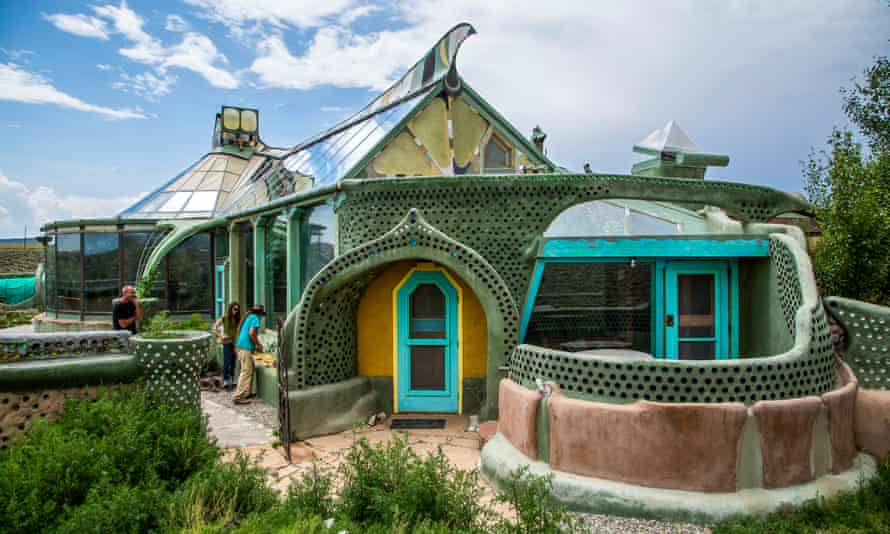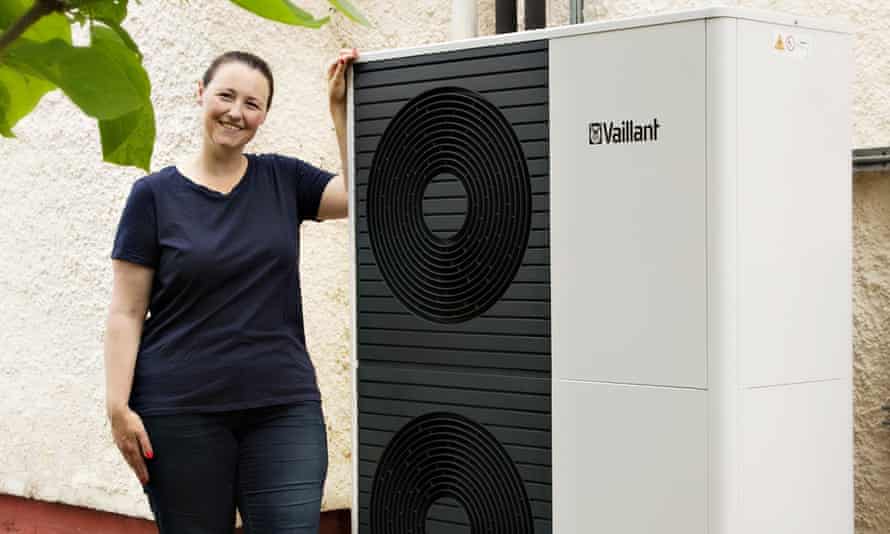What will our eco-friendly homes of the future look like?
The planet-saving innovations available, and which are most likely to be used in UK houses

As we argue over heat pumps and electric car charging sockets here in the UK, it is undeniable that most of our homes have a long way to go to be eco-friendly.
To reach net zero, we are going to have to change how we heat our houses. The way they are built will probably have to change, too. Perhaps the ubiquitous squat brick suburban house will become a thing of the past. Hopefully so will our Victorian pipe system and, for those of us who rent, our ancient boilers which make a disturbing noise.
We spoke to experts at the Centre for Alternative Technology (CAT) to find out what the eco-friendly house of the future could look like.

Design for the sun
If you’re lucky enough to be able to start from scratch, you can immediately make proper use of the sun by orienting your house to make the most of both light and heat. The futuristic Earthship homes built by Michael Reynolds in New Mexico in the 1970s were built at an angle to the sun which would maximise solar gain – collecting warmth in an atrium at the front, with the thick thermal mass of the walls then regulating the temperature inside. Using the sun for free light and heat means you will also have to think about shade as part of the design.
The house should be built to efficient standards, too. The CAT recommends houses are built or retrofitted to AECB or Passivhaus standard. This essentially means the house will have maximum insulation to keep energy demands down.
Materials
In a perfect world, homes could be built from natural products which sequester carbon from the air as they grow, such as hemp, wood fibre, straw and other grasses. A particularly stylish example of a house made from hemp can be found in Cambridgeshire, where the architects who designed it boast that it is made from the plant which grows around it. The home, called Flat House on Margent farm, is constructed from timber, which is filled with a mulch of hemp.
But if you don’t fancy that, another excellent possibility is using recycled materials – brick, stone, glass. Unfired earth bricks – which are left to dry naturally rather than heated in an oven – are increasingly being used. Pretty much anything is better than concrete, which is one of the most carbon-intensive materials on the planet.
Nature enthusiasts and climate campaigners in European cities have also been lobbying for their local authorities to allow for “green roofs” on buildings, which both help with insulation and can improve biodiversity. In the UK you don’t need planning permission to do this, but it’s best to work with an experienced builder to make sure your roof is suitable.

Heating and energy
How we power and heat our homes is usually one of the biggest contributors to the household’s carbon footprint. If appropriate for the needs of the house, CAT suggests solar water heating for hot water, especially for larger households (for example, three or four people washing daily).
Heat pumps, which take heat from the ground or air outside, are a low-carbon way to heat a home. The government is currently proposing a target of 600,000 heat pumps to be installed annually by 2028. Should you replace a well-functioning boiler immediately? If your sole priority is saving carbon emissions, then Jan Rosenow of the Regulatory Assistance Project crunched the numbers and came up with the answer yes: the savings by a heat pump outweigh the embodied carbon emissions of making it. However, the pumps are extremely expensive.
What about your own energy generation? If it is possible to have solar photovoltaics that can be integrated into the roof at the building or refurbishment stage, this is ideal. CAT points out, however, that wind and hydro power are better as community-level projects that the local community could invest in.

Efficiency
Now we have the good energy, we don’t want to waste it. Smart meters can really improve your energy use, but it’s also worth thinking about how you use your home. Programme the timing of your thermostat carefully and turn off radiators completely in rooms which get used less, for example.
Energy efficient lighting should be installed throughout the house. And insulation is key. LED lights are extremely efficient, and the new generation comes in much wider settings than the original harsh colours.
Getting proper insulation put in at all points is critical, to stop our leaky buildings letting all the energy back out again. The same goes for your water. Water-efficient taps and shower heads are a good way to keep water waste as low as possible – plus there are sensible ideas such as using a bowl for washing up instead of running the tap.
Transport
Location, location. Choosing a good place to live includes thinking about the transport connections so that you can minimise car use (if you have one) and use your bike or public transport instead.
Community
Experts recommend a community of eco-friendly homes so ideas can be swapped, and like-minded people can share transport and resources. Community energy projects could end up being a good way for local groups to both reduce bills and improve their carbon footprint. At the moment, politicians are pushing for local energy schemes to be allowed to produce their own electricity; at the moment, all energy produced has to be sold back to the grid rather than directly used to heat homes. Wind and hydroelectric power sources are currently in the works for some communities who hope to be able to run whole villages on the clean energy provided.
